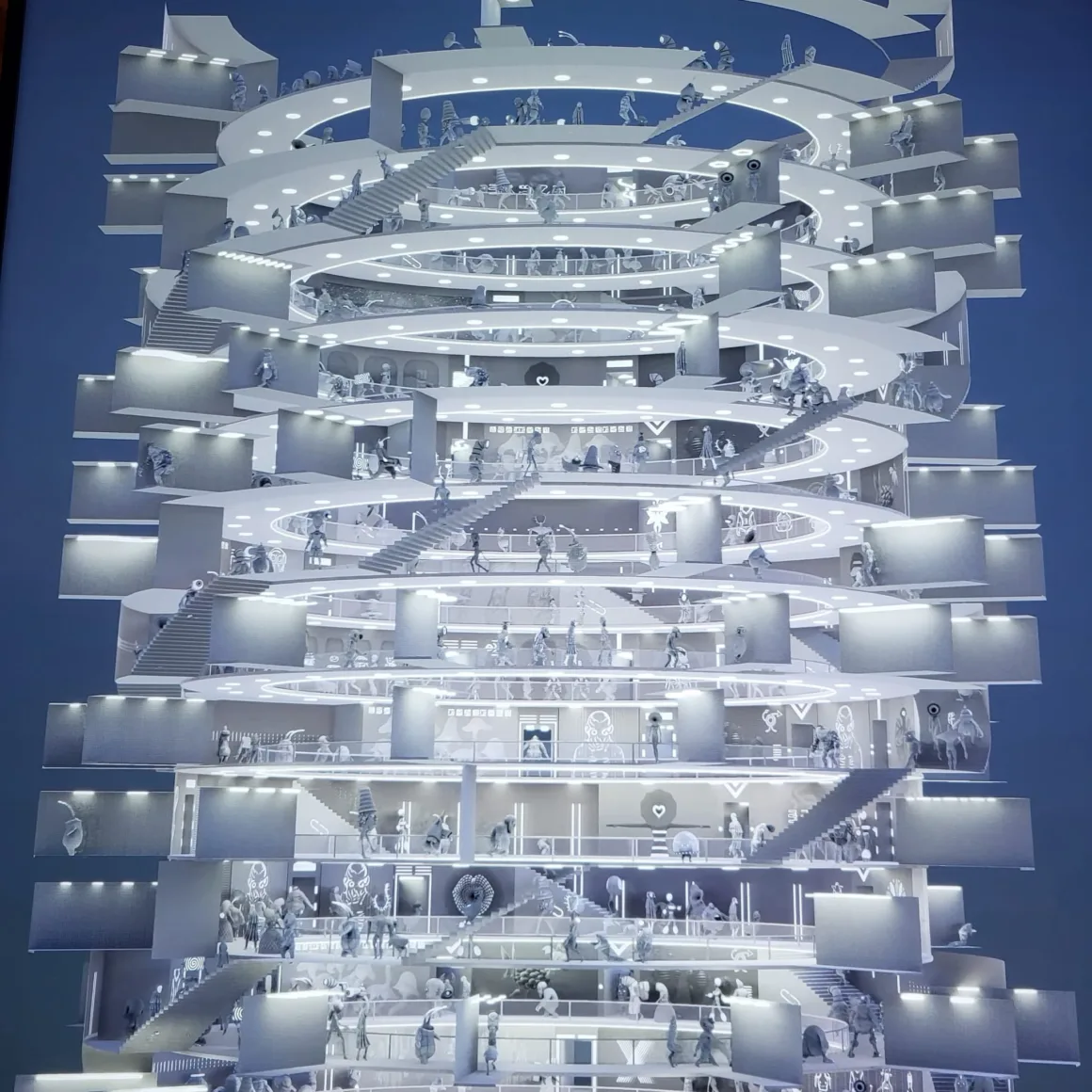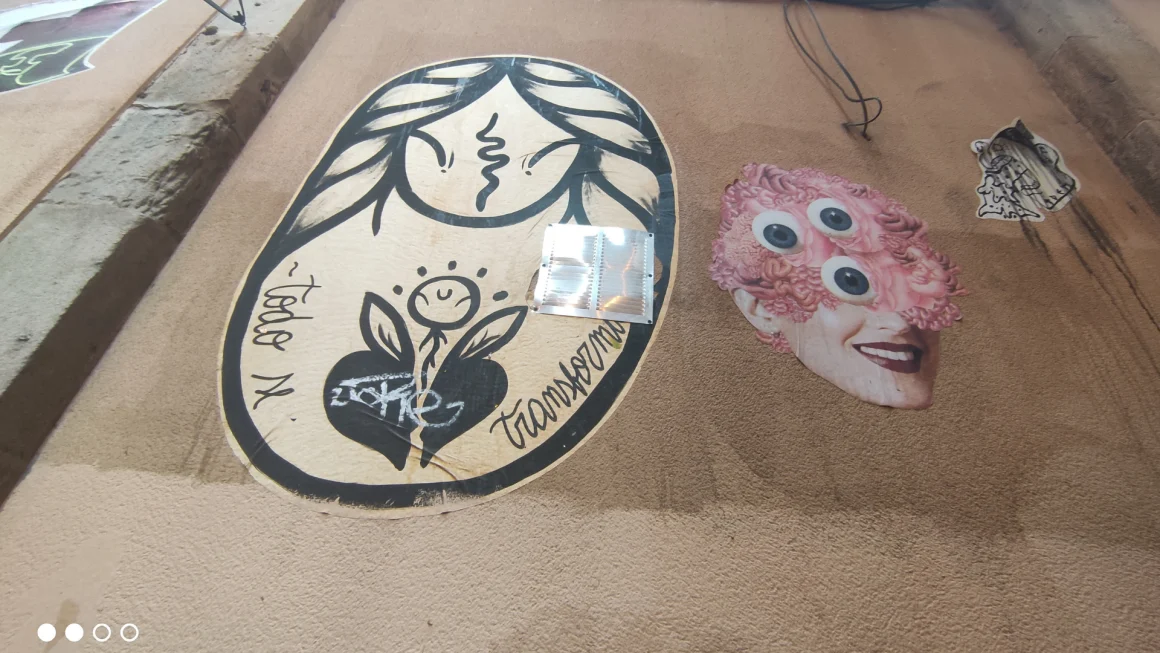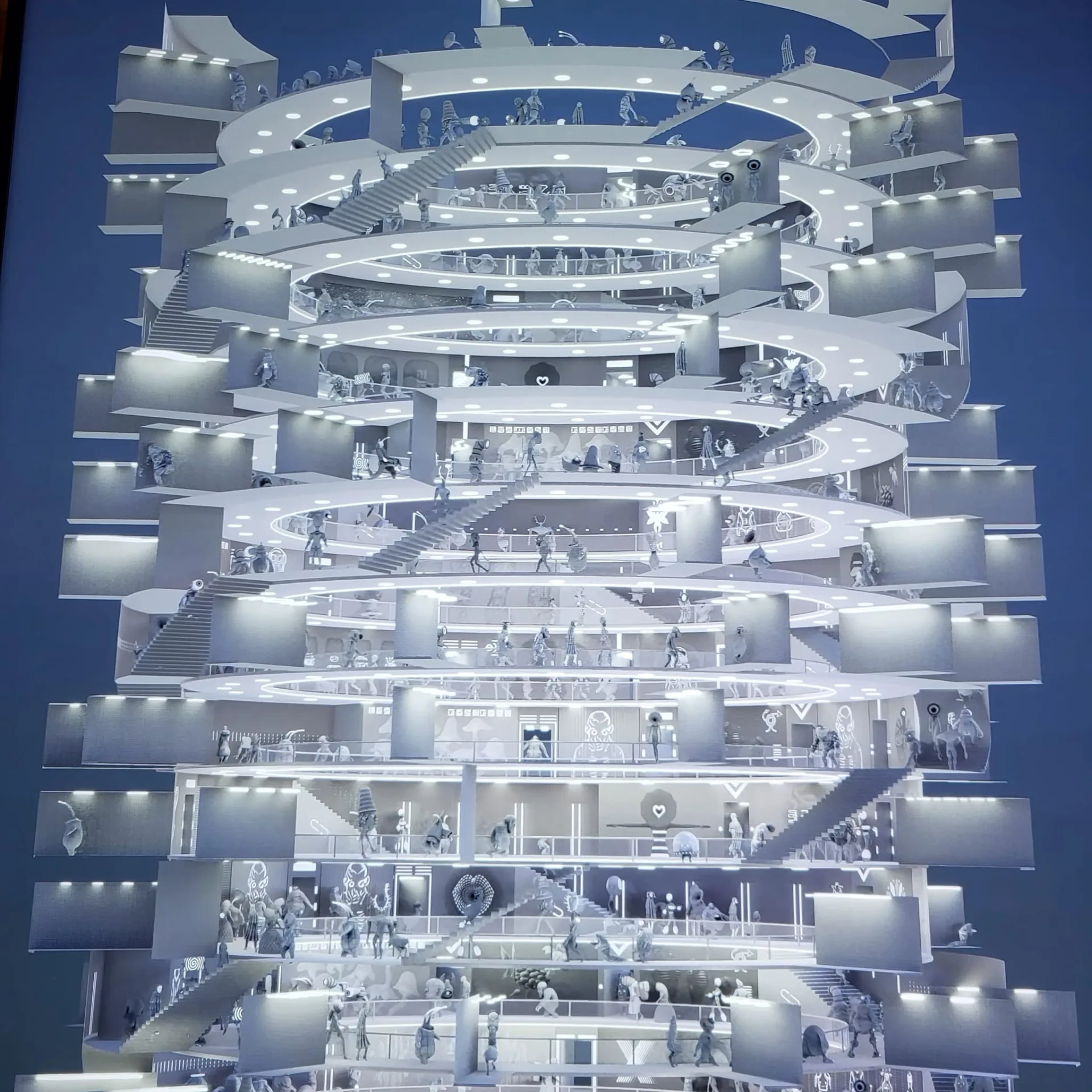Are you busy? I often hear myself and others say they have so much to do. An overwhelmingly packed schedule, to-do lists longer than toilet paper rolls and countless stimuli demanding our attention. Before we know it, we fill our days with an endless stream of activities. We go on automatic pilot. Keep living, keep moving, keep doing. Now it is this doing that interests me most. Recently, I heard of the term “human doing” as an alternative to “human being”. Have we become a slave to our own repetitive actions?
What is it?
Tower to heaven -or TRIBE TOWER is a moving artwork by The Dutch art studio Smack. It depicts a grey building which reminds us of a mall or an office building. Grey creatures walk through the building, either going up or down in the spiralling structure. They do not (want to) communicate with one another. All figures keep moving at a steady pace as the building keeps growing.

The makers: Ton Meijdam, Thom Snels and Béla Zsigmond, described the process within the tower as controlled but voluntary. The creatures keep moving. The tower of Babylon and the work of Michel Foucault inspired Smack.
Why is it cool?
It makes you think. The TRIBE tower, although not explicitly mentioned, reflects society. Us humans are the colourless and uncommunicative beings that are voluntarily in an endless loop of doing. But how did we end up like this? It is because of power and ignorance.
Most people believe that power comes from select sources. Foucault believes power is not something held by one or multiple humans. It can be attributed to many factors and is created when there is an imbalance, inequality or difference. Power or the act of overpowering often has a goal: to manipulate or control a process or outcome, positively or negatively. Power influences the beings to keep walking and grow the building.
In modern times, as Foucault states, we are dealing with what he calls disciplinary power. This way of practising power is through controlling and optimising bodies to work for and not against the system. This power can be internalised, after which it does not need many stimuli from outside. Disciplinary power (re)creates new patterns and ways to lead an individual to do what the power wants. The creatures in the TRIBE tower move in a pattern together by choice. This means they must regulate themselves.

I want to add to this that social pressure and rules exist to keep from chaos. Structure and control are supposed to make us happier as it prevents crime and big equality. If it does not make us happy, however, why not quit? In essence, you are not obliged to do anything. The only certain thing in life is death. When you think about it, nobody needs to do anything but we obey the system and its rules as we believe in them. Power and force are not tangible, it is something we create together. We can see this clearly within the tower to heaven. If the living beings would not believe in the upward spiralling building, they would not keep moving.
The artwork has a connection to the tower of Babel too. In Genesis 11:1–9 NRSVUE, a society that speaks the same language builds a tower towards the heavens. God is not happy with this and confuses the people by introducing different languages. It is a tale about arrogance according to some. Linked back to the TRIBE tower, it can be stated that our ignorance towards each other and our lack of insight into the loop we are in, makes us move endlessly. There is no questioning the present or talking to others about it.
Why does it have future growth potential?
The tower to heaven shows us that we should watch out for our ever-moving society in which we do not communicate or understand. Instead of walking in circles, we should stand still, if only briefly. Why are we doing this? What purpose or goal is there? Really hear and listen. The river of acts carries away most people. It roars and moves forward. Some want to resist, but it is hard to go against the way of water. It can drown you, so if you do not stop, keep your head up high.







Rahim Ennassiri
Fenne van Mierlo